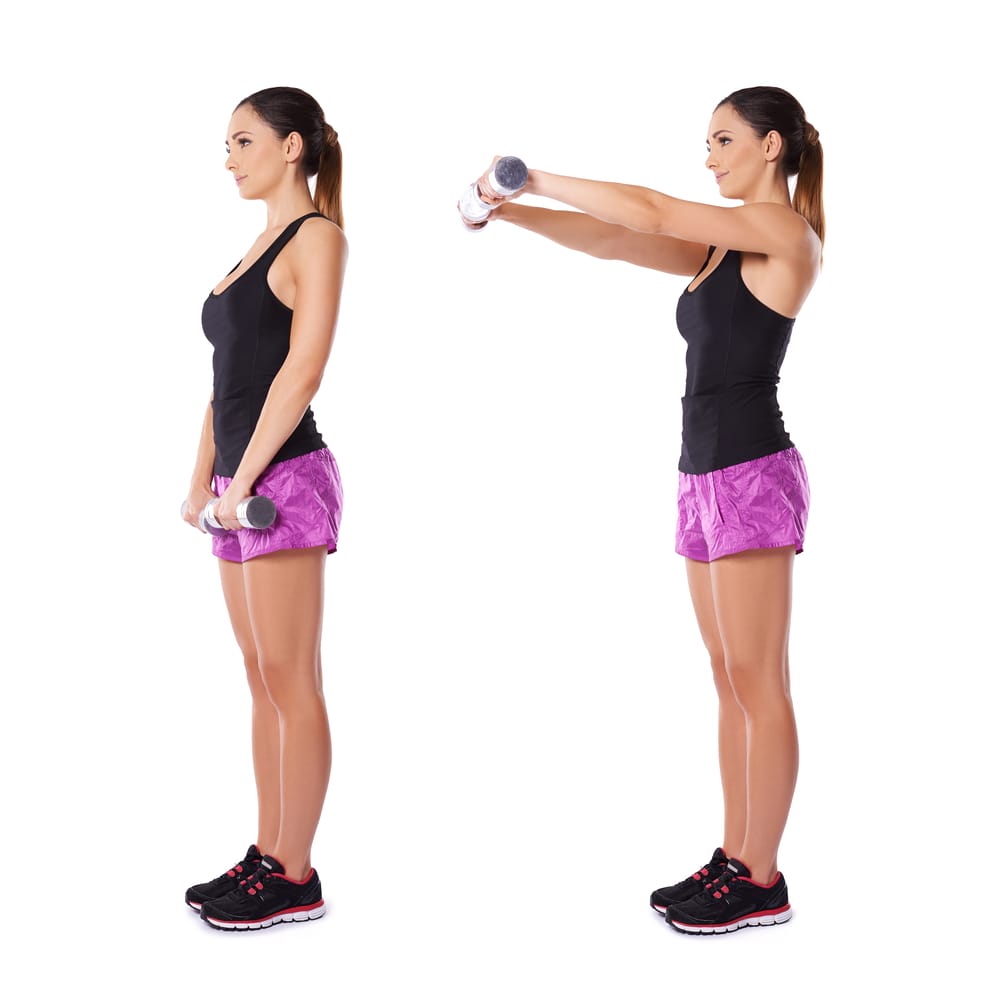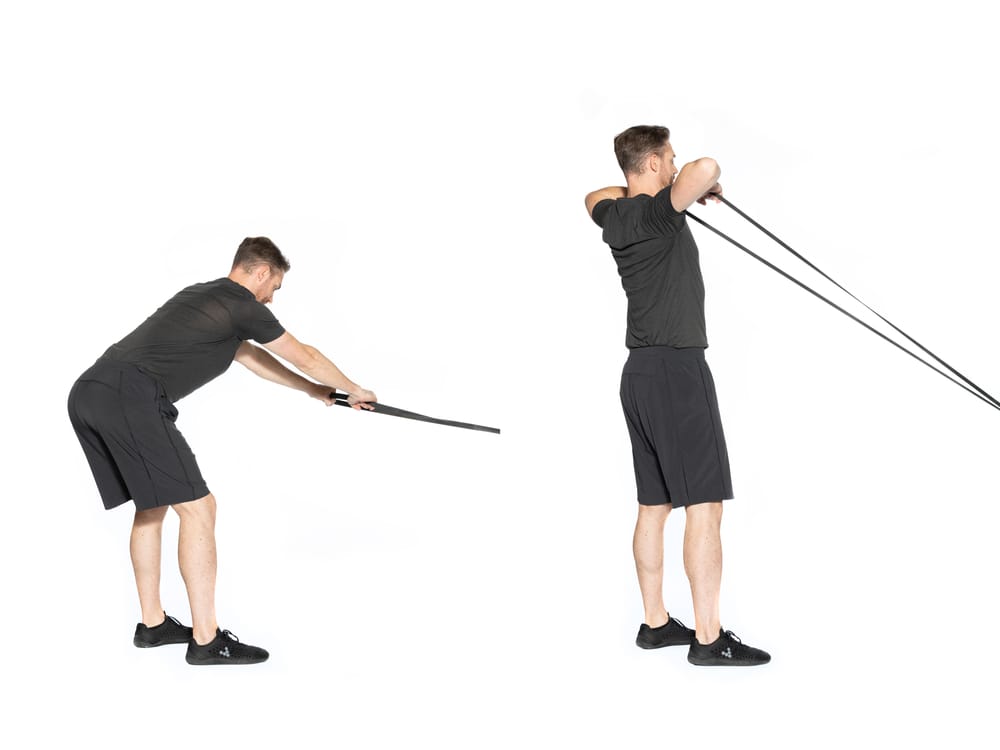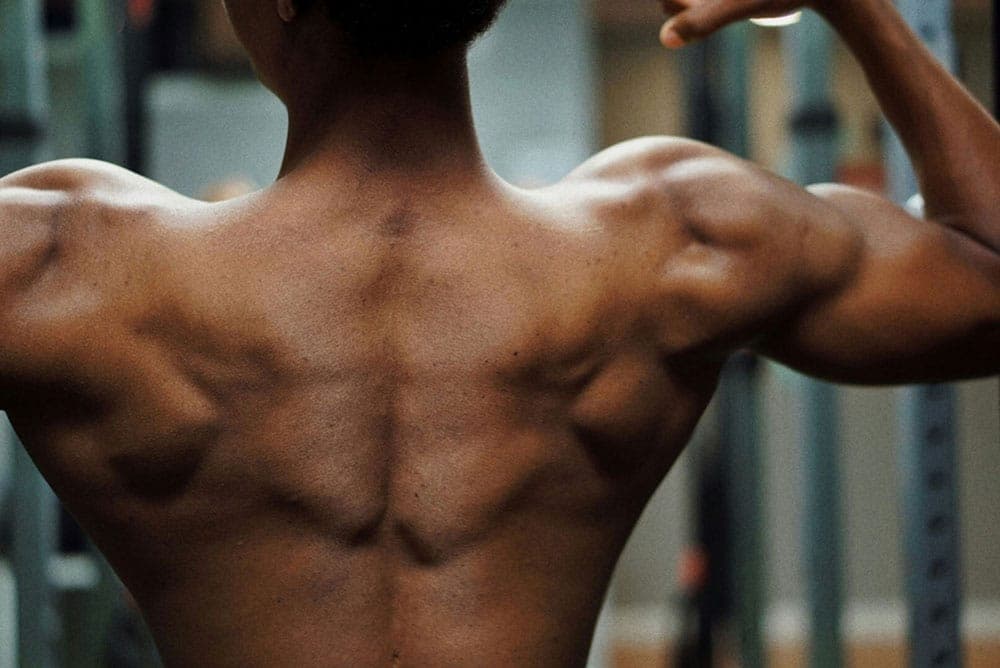Bad Shoulder Genetics: Causes & How to Fix Weak Shoulders
What are bad shoulder genetics? This guide will help you optimize your workouts to work around weak shoulder genes.
“Boulder shoulders” are among the most common gym goals, especially for guys who lift. Getting huge shoulders with wide clavicles helps to balance out your frame, giving you a wider look on top.
Hopefully, with slim V-lined abs, your body will look like that of a Greek god.
For women too, the shoulders are one of the most important areas to train. Nice shoulders and a defined back can be sexy AF in backless dresses.
Are you looking to be head and shoulders above the rest but struggling with bad shoulder genetics?
Although they may not be as stressful to deal with as bad bicep genetics or narrow clavicles, they can still put a damper on building your most aesthetic physique.
If you’re suffering from shrunken shoulders, read on to learn more about the muscles of the shoulder and what factors could be causing your shoulders to stay small. Plus, we’ll outline some hacks to shred the shoulders and get those boulders coming in.
What Are the Shoulder Muscles?
In your shoulder, you have a few key muscles to worry about: the muscles of your rotator cuff and your deltoids.
The rotator cuff muscles are:
- Subscapularis: This muscle attaches to the middle of your scapula and helps rotate your humerus (upper arm).
- Supraspinatus: This muscle helps lift your arms and creates a counterbalance to the force generated by your deltoids.
- Infraspinatus: The infraspinatus helps rotate your upper arm and keep your shoulder stable.
- Teres Minor: This muscle stabilizes your shoulder by holding the head of your humerus inside your glenoid cavity (the ditch where this bone meets your scapula).
Next up, we have the deltoids.
Your deltoid muscle group is made up of the:
- Anterior Deltoid: Your anterior deltoids (front delts) help you move your arms forward.
- Lateral Deltoid: Your lateral deltoids (side delts) help you move your arms sideways.
- Posterior Deltoid: Your posterior deltoids (rear delts) help you move your arms backwards.
What Are Bad Shoulder Genetics?
Although there’s no objective “good” and “bad” regarding genes as long as you are healthy, some muscle structures and builds are widely considered more aesthetic.
Many of these standards come from the bodybuilding world, and we see them carried out into the broader fitness community.
These are a few signs you can look out for to understand if you have bad shoulder genetics.
Muscle Belly
The muscle belly is the meaty part of your muscle that sits between your two tendons where the muscle attaches to your bones.
A longer muscle belly can give you a more filled-out look or make the muscle distribution seem more even. Sometimes, though, you won’t see the high muscle peaks that can make your shoulders look “big” on these types of muscles.
A shorter muscle belly can give your muscles a choppy look. Shorter muscles, however, may have higher muscle peaks than long muscles, which may tend to hold more even volume along their bellies.
Muscle Building Genetics
Some people have poor muscle-building genetics in general— not just around the shoulders.
As an estimate, about 50-80% of your lean muscle mass-building capacity is genetic. Although theoretically anyone can build muscle, not everyone is predisposed to get big easily or naturally.
Don’t be discouraged. Even if your parents were not muscular people, implementing a regular shoulder training routine can still give you strong shoulders.
With plenty of muscular recovery techniques, a healthy diet including supplementing where needed, shoulder workouts like shoulder presses, and good hydration and rest after your exercise, your shoulders can still shine.
Genetic Shoulder Injuries
If you’ve injured a shoulder in the past, you may also not be entirely at fault. We have research to suggest that rotator cuff injuries have a strong genetic predisposition. This study compiles data from various other peer-reviewed studies on genetics and rotator cuff injuries.
It found that siblings of people with rotator cuff disease were more likely to develop a full-thickness rotator cuff tear. People with rotator cuff tears had family members with a history of rotator cuff injuries or surgeries more often too.
If someone in your family has had shoulder injuries, it’s a good idea to consider yourself at a higher risk and take extra care of your shoulders.
Nevertheless, good shoulder care is important for anyone. Especially if you love to lift heavy on push days. Let’s learn a bit more about the shoulder joint and why it pays to keep yours safe.
Shoulder Joint Anatomy
So what’s going on inside your shoulders anyway? The shoulder joint or glenohumeral joint is the most mobile joint in your body.
This ball and socket joint helps you rotate, extend, and flex your arm. It also lets you adduct (move toward your body) and abduct (move away from your body) the limb.
Because it’s so mobile, the glenohumeral joint is more susceptible to injuries like tendinitis, rotator cuff injuries and impingement. So it’s important to focus on keeping the shoulders strong.
Deltoid Growth Exercises
Although mitigating injuries is the best way to ensure healthy shoulders, ultimately, if you want to grow your shoulders, you need to hit your deltoids. Hard.
Bad genes or not, your deltoid muscles can grow, giving you bigger shoulders. Focus on hypertrophy exercises to target the delts. This means exercises that focus on muscle growth, not necessarily strength.
Remember— you can have STRONG shoulders without having BIG shoulders. But if you want to focus on increasing your muscle size, hypertrophy training is your best friend. Focus on training in the 8-12 rep range at 70% of your one-rep max for weight.
This should help even the least genetically blessed shoulders see some size increases.
Front Delt Exercises
For stronger front delts try the:
- Dumbbell Front Raise: Grab a pair of medium dumbbells with an overhand grip. Stand with your feet hip-width apart. Raise your arms straight out in front of you to shoulder height, then slowly lower back down.

- Dumbbell Arnold Press: With a medium-weight set of dumbbells, curl the weights up toward you with an underhand grip, like you would in a traditional curl.
From the top of this curl, externally rotate your wrists and press your weight up overhead. Reverse your path of motion on the way down, flipping your wrists inward once your hands come to shoulder height on the way down.
Side Delt Exercises
The Arnold press hits your side delts as well. You can also incorporate:
- Upright row: Grab a medium-weight barbell or set of dumbbells. Grasp your weight with an overhand grip. Bring your elbows out to the sides as you pull the weight up to chest height, sliding it across the front of your body.
Rear Delt Exercises
- Single-Arm Rear Delt Row: Grab a weight bench and support yourself by holding the bench with one hand.
In the other hand, grab a medium-weight dumbbell or kettlebell. Keep your back straight and gaze forward while you pull the weight up. Bend your elbow up and back.
Keep the elbow close to your body. Reverse the movement and bring your weight down with control. You can also do this move with both arms, using a barbell instead.

- Face Pulls: Set up a rope handle attachment at a cable pulley station. If this is not available, you can also use an anchored resistance band. Load a medium weight onto your cable pulley stack.
Grab the handles of your rope with a neutral grip, then pulling your elbows back and squeezing your shoulder blades, pull your hands directly to opposite sides of your face. Slowly release the weight with control.

The Takeaway
Bad shoulder genetics can not only make your muscles look smaller, but they can also put you at higher injury risk.
The glenohumeral joint of the shoulder is highly mobile. That means you’ll have to do a little extra work to keep it strong. Shoulder injuries are frequently genetic. So if your parents or siblings have a history of shoulder problems or surgeries, be extremely careful to keep your joints safe.
When people ask the question “Do I have bad shoulder genetics?” though, it generally relates more to the appearance of your shoulders. Short muscle bellies or bad overall muscle-building genes can make you susceptible to small shoulders.
To work around this incorporate moves, like the ones outlined above to hit your front, side, and rear deltoids. This should help you build balanced boulder shoulders that could rival even those of someone with perfect genes.
Remember to stretch, rest, and recover and you should see shoulder gains in no time.
References:
Chang LR, Anand P, Varacallo M. Anatomy, Shoulder and Upper Limb, Glenohumeral Joint. [Updated 2023 Aug 8]. In: StatPearls [Internet]. Treasure Island (FL): StatPearls Publishing; 2024 Jan-. Available from: https://www.ncbi.nlm.nih.gov/books/NBK537018/
Creech JA, Silver S. Shoulder Impingement Syndrome. [Updated 2023 Apr 17]. In: StatPearls [Internet]. Treasure Island (FL): StatPearls Publishing; 2024 Jan-. Available from: https://www.ncbi.nlm.nih.gov/books/NBK554518/
Dabija, D. I., Gao, C., Edwards, T. L., Kuhn, J. E., & Jain, N. B. (2017). Genetic and familial predisposition to rotator cuff disease: a systematic review. Journal of shoulder and elbow surgery, 26(6), 1103–1112. https://doi.org/10.1016/j.jse.2016.11.038
Krzysztofik, M., Wilk, M., Wojdała, G., & Gołaś, A. (2019). Maximizing Muscle Hypertrophy: A Systematic Review of Advanced Resistance Training Techniques and Methods. International journal of environmental research and public health, 16(24), 4897. https://doi.org/10.3390/ijerph16244897
Phillips, D., Kosek, P., & Karduna, A. (2018). The contribution of the supraspinatus muscle at sub-maximal contractions. Journal of biomechanics, 68, 65–69. https://doi.org/10.1016/j.jbiomech.2017.12.015
Roth S. M. (2012). Genetic aspects of skeletal muscle strength and mass with relevance to sarcopenia. BoneKEy reports, 1, 58. https://doi.org/10.1038/bonekey.2012.58
Related articles


Get fit with Flex
Build muscle & lose weight fast for free.
Available on iPhone + Apple Watch





